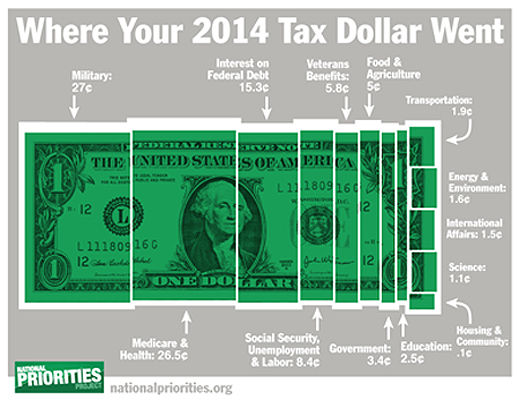
The issue of how to pay for the expenses of government has always been contested ground in America. In its early years, the United States had a weak concept of common ownership in the public sector: Roads, canals, schools, militias and many other functions of government that we think of today as the common inheritance of all citizens were privately owned and run.
The War of 1812 first got Americans thinking about an income tax, but the war ended before the tax could be imposed. Not until 1861 did President Abraham Lincoln and Congress introduce the first personal income tax, for the purpose of keeping the United States united. The Revenue Act of 1861 imposed a 3 percent tax on all incomes over $800.
In 1894, the Wilson-Gorman tariff imposed the first peacetime income tax of 2 percent on income over $4000, affecting fewer than one in ten households at that time. From then on, as the U.S. became an imperial power with a worldwide reach, a steady stream of income tax was deemed necessary to pursue the legitimate aims of government, which by that time included libraries, public education and universities, interstate commerce, roadways, large infrastructural improvements and national defense.
The very definition of “income” underwent periodic review. Was it wages only? How about profits on real estate, factories and financial investments? Once corporations started to dominate the economy, what rate should they pay?
In 1913, the top tax rate was 7 percent on incomes above $500,000, but once the U.S. entered World War I, the top rate rose to 77 percent and the income threshold for this bracket increased to $1,000,000.
All through the 1920s, top tax rates were steadily reduced, in theory to encourage economic growth. By 1928, the top rate was scaled down to 24 percent, and that applied to incomes of $100,000 or more. With less tax to pay, the extra funds now available to the rich led to uncontrolled speculation, wide income disparity, and in 1929 to the economic crash and the Great Depression.
During the Depression and World War II, the top income tax rate rose again. By 1939 the top rate was 75 percent for incomes above $5,000,000. During 1944 and 1945, the top rate hit its all-time high at 94 percent applied to income above $200,000.
The greatest years of American success as a “middle-class society” – though not for everybody – came in the 1950s, when the highest marginal tax rate for individuals for U.S. federal income tax purposes was 92 percent, and union membership was at its highest. Since 1964, the threshold for paying top income tax rate has generally been between $200,000 and $400,000.
When Ronald Reagan was president (1981 – 1989), top income rates lowered, reaching 28 percent by the end of the 1980s, and also began to be applied to lower and lower incomes. According to that new formulation, executives and secretaries could be paying the same rate – less for executives, actually, since other forms of income such as capital gains were taxed at lower rates. In the days of “trickle-down” economics, corporate taxes were kept low, and once again income disparity increased, as the GOP also attacked unions, and various administrations, both Republican and Democratic, conducted far-flung military operations in Latin America, Africa and Asia.
Under President Bill Clinton, top tax rates were increased in 1992 and 1994, culminating in a 39.6 percent top individual rate applicable to all classes of income. Once George W. Bush came in (2001), top individual tax rates were lowered to 35 percent and tax rates on dividends and capital gains lowered to 15 percent. But George “Dubya” was pursuing long, costly wars in Iraq and Afghanistan which taxes could not support. Inevitably, the social sector declined precipitously, financial speculation went wild, and the crash of 2008 occurred.
It has taken six years of patient stewardship under President Obama, much of that time with a hostile Congress, to recover slowly from the Great Recession, although the results have been unevenly distributed. Profits have risen to unprecedented levels, and the capital sector and manufacturing have largely rebounded. Wages, however, have remained stagnant.
Thus it is no surprise that working people have risen up to demand a fair share of the recovery. On federal income tax day, April 15, 2015, the United States is witnessing an upheaval of the lowest paid workers in the country, demanding a living wage of $15 an hour. The future of progressive politics is of necessity tied to this populist cause.










